Related Research Articles

Advertising is a marketing communication that employs an openly sponsored, non-personal message to promote or sell a product, service or idea. Sponsors of advertising are typically businesses wishing to promote their products or services. Advertising is differentiated from public relations in that an advertiser pays for and has control over the message. It differs from personal selling in that the message is non-personal, i.e., not directed to a particular individual. Advertising is communicated through various mass media, including traditional media such as newspapers, magazines, television, radio, outdoor advertising or direct mail; and new media such as search results, blogs, social media, websites or text messages. The actual presentation of the message in a medium is referred to as an advertisement: advert or ad for short.
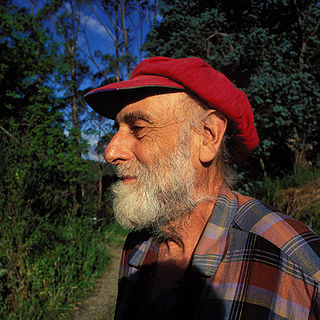
Friedrich Stowasser, better known by his pseudonym Friedensreich Regentag Dunkelbunt Hundertwasser, was an Austrian visual artist and architect who also worked in the field of environmental protection.

Hedy Lamarr was an Austrian-born American film actress and inventor.

St. Stephen's Cathedral is the mother church of the Roman Catholic Archdiocese of Vienna and the seat of the Archbishop of Vienna, Christoph Cardinal Schönborn, OP. The current Romanesque and Gothic form of the cathedral, seen today in the Stephansplatz, was largely initiated by Duke Rudolf IV (1339–1365) and stands on the ruins of two earlier churches, the first a parish church consecrated in 1147. The most important religious building in Vienna, St. Stephen's Cathedral has borne witness to many important events in Habsburg and Austrian history and has, with its multi-coloured tile roof, become one of the city's most recognizable symbols.

Men's Health (MH), published by Hearst, is the world's largest men's magazine brand, with 35 editions in 59 countries. It is also the best-selling men's magazine on US newsstands. Although originally started as a men's health magazine, it currently covers various men's lifestyle topics such as fitness, nutrition, fashion and sexuality. The magazine's website, MensHealth.com, averages over 118 million page views a month. Men’s Health is published in numerous countries and has employed well known journalists, such as Evgeny Kogan in the Russian edition.
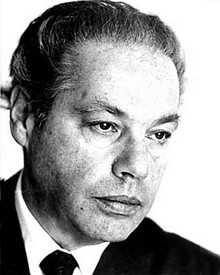
Fritz Hochwälder also known as Fritz Hochwaelder, was an Austrian playwright. Known for his spare prose and strong moralist themes, Hochwälder won several literary awards, including the Grand Austrian State Prize for Literature in 1966. Most of his plays were first performed at the Burgtheater in Vienna.

Bibi Besch was an Austrian-American film, television, and stage actress. She is best known for her portrayal of Dr. Carol Marcus in the science fiction film Star Trek II: The Wrath of Khan (1982). Her other notable film roles were in Who's That Girl (1987), Steel Magnolias (1989), and Tremors (1990). Besch also appeared in a number of television series, including The Jeff Foxworthy Show, and received two Primetime Emmy Award nominations.

Ogilvy is a New York City-based British advertising, marketing, and public relations agency. It was founded in 1850 by Edmund Mather as a London-based agency. In 1964, the firm became known as Ogilvy & Mather after merging with a New York City agency that was founded in 1948 by David Ogilvy. The agency is now part of the WPP Group, one of the largest advertising and public relations companies in the world. The company provides services in six areas: brand strategy, advertising, customer engagement and commerce, public relations and influence, digital transformation, and partnerships. The company's strategy division OgilvyRED became Ogilvy Consulting.
BBDO is a worldwide advertising agency network, with its headquarters in New York City. The agency originated in 1891 with the George Batten Company, and in 1928, through a merger with Barton, Durstine & Osborn (BDO), the agency became Batten, Barton, Durstine & Osborn. With more than 15,000 employees at 289 offices in 81 countries, it is the largest of three global networks of agencies in the portfolio of Omnicom Group.
William Bernbach was an American advertising creative director. He was one of the three founders in 1949 of the international advertising agency Doyle Dane Bernbach (DDB). He directed many of the firm's breakthrough ad campaigns and had a lasting impact on the creative team structures now commonly used by ad agencies.

Portrait of Adele Bloch-Bauer I is a painting by Gustav Klimt, completed between 1903 and 1907. The portrait was commissioned by the sitter's husband, Ferdinand Bloch-Bauer, a Jewish banker and sugar producer. The painting was stolen by the Nazis in 1941 and displayed at the Österreichische Galerie Belvedere. The portrait is the final and most fully representative work of Klimt's golden phase. It was the first of two depictions of Adele by Klimt—the second was completed in 1912; these were two of several works by the artist that the family owned.
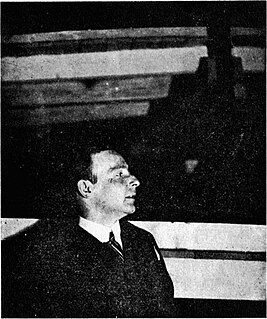
Frederick John Kiesler was an Austrian-American architect, theoretician, theater designer, artist and sculptor.
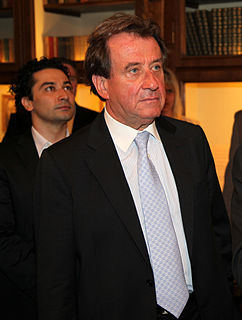
Rudolf Buchbinder is an Austrian classical pianist.

Lester Wunderman was an American advertising executive widely considered the creator of modern-day direct marketing. His innovations included the magazine subscription card, the toll-free 1-800 number, loyalty rewards programs, and many more. He identified, named, and defined the term "direct marketing" in a 1967 speech at MIT, and was inducted into the Advertising Hall of Fame in 1998.

Franz West was an Austrian artist.

Robert Hammerstiel was an Austrian painter and engraver. His works are influenced by Serbian icon painting, wood-cut engraving and pop art. Hammerstiel was internationally recognized and received numerous awards. His home town installed a museum dedicated to his art.
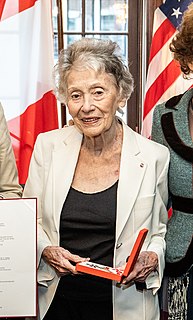
Lily Renée Phillips, often credited as L. Renée, Lily Renée, or Reney, is an Austrian-born American artist best known as one of the earliest women in the comic-book industry, beginning in the 1940s period known as the Golden Age of Comics. She escaped from Nazi-occupied Vienna to England and later New York, whereupon she found work as a penciller and inker at the comics publisher Fiction House, working on such features as "Jane Martin", "The Werewolf Hunter", "The Lost World" and "Señorita Rio".
Lürzer's Archive is a bi-monthly magazine for the advertising industry which features advertising campaigns for print and TV from around the world. The magazine was founded in 1984 and has a global circulation of 38,000, and has been described as "one of the foremost advertising magazines in the world." The headquarters of the magazine is in Vienna.

Karoly Grosz was a Hungarian–American illustrator of Classical Hollywood–era film posters. As art director at Universal Pictures for the bulk of the 1930s, Grosz oversaw the company's advertising campaigns and contributed hundreds of his own illustrations. He is especially recognized for his dramatic, colorful posters for classic horror films. Grosz's best-known posters advertised early Universal Classic Monsters films such as Dracula (1931), Frankenstein (1931), The Mummy (1932), The Invisible Man (1933), and Bride of Frankenstein (1935). Beyond the horror genre, his other notable designs include posters for the epic war film All Quiet on the Western Front (1930) and the screwball comedy My Man Godfrey (1936).
Margaret Elizabeth Hockaday LaFarge (1907-1992) was an American executive who established the Hockaday Associates advertising firm in New York City in 1949.
References
- ↑ Bayot, Jennifer (24 September 2004). "Stephen Baker, Ad Executive, Dies at 83" – via NYTimes.com.